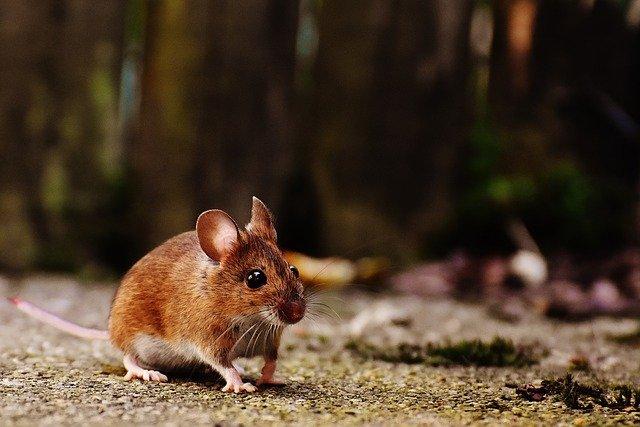
13 Tips for Keeping Mice Out of Your Home

October 28, 2021
They may be cute, but mice are not nice.
Mice can pose health risks to the humans whose space they invade. The Center for Disease Control (CDC) details the bacterial diseases, viruses, and parasites that mice can carry, including salmonella, Pasteurella, Giardia, and even the scary-sounding (but rare) Lymphocytic Choriomeningitis Virus, or LCMV.
And of course, mice are notorious for the damage they do through chewing. From insulation to heirlooms, mice have no qualms about destroying your property by gnawing and nesting. According to the Internet Center for Wildlife Damage Management, mice prefer to nest close to heat sources such as hot water heaters, pilot lights, or compressors, and often wreak havoc on large electrical appliances by chewing on wiring, causing short circuits, and posing a fire hazard.
When it comes to protecting your home from mice, attention to detail is key; mice can squeeze through holes the size of a dime, according to the School of Integrated Pest Management at North Carolina State University (NCSU). And while they can invade your home at any time during the year, mice are most active entering structures during the winter in search of food and shelter from the cold. The official winter months in North Carolina are December, January, and February.
So, what can you do to protect your structure and belongings from these tiny destructive creatures? Here are 13 steps you can take to keep mice out of your home.
Create a No-Go Zone
Make the space around your home unwelcoming to mice by removing hiding places and food sources, and even introducing the rodent’s natural predators.
#1 - Trim trees and shrubs away from the house to limit their shelter.
#2 - Get rid of clutter close to the house such as equipment covered with tarps, stacks of firewood, and piles of mulch or leaves.
#3 - Temporarily stop feeding the birds (or use only huskless feed) to leave behind less leftovers for critters while you are trying to reverse a mice invasion, recommends the U.S. Environmental Protection Agency.
#4 - Store birdseed and grass seed in sealed, pest-proof containers.
#5 - Set outdoor garbage cans on 6-inch-high wood platforms (such as standard pallets) and use bungee cords or other straps to lock the lids, suggests Family Handyman magazine.
#6 - Consider having a Barn Owl nest box installed on your property. Barn owls eat 79 pounds of mice every year -- that’s more than 3 mice a day! Because the Barn Owl is classified as a Species of Greatest Conservation Need in North Carolina, the state’s Wildlife Resources Commission actively solicits sightings and installs nest boxes for free.
#7 - Inspect the outside of your home’s structure for potential entry points for mice. Check around the roofline, gables, and eaves, foundation, basement entry, and junctures in siding. Plug any small holes with steel wool or copper scrub pads, then seal with caulking or expanding foam sealant.
#8 - Cover larger openings with metal sheeting and vents with a lath screen (woven wire mesh) or hardware cloth (thin-gauge wire mesh fabric).
#9 - Curb clutter in your home -- especially cardboard boxes, bags, newspapers, piles of blankets, boxes and open bins of rarely-used items. These provide not only hiding places but potential nesting materials.
#10 - Mice love to eat grains, rice, cereal, and sweets. Store pantry items in containers made of metal, glass or heavy-duty plastic, preferably with airtight sealing lids.
#11 - Mice also eat pet food - and being omnivores, they are not picky when it comes to the contents. Clean up around your pet bowls daily, and transfer pet food from the original bags to durable containers.
#12 - Consider getting a cat. While myths about dryer sheets and certain scents repelling mice are unfortunately not founded, mice are in fact deterred by the smell of the feared felines. Even if your cat is not a talented hunter, its very presence will discourage mice from taking up residence in your home.
#13 - Regularly check potential hiding spaces for signs of intruders: rice-shaped droppings or nests of shredded paper or other material. Look behind refrigerators, stoves, and cabinets; under sinks and washing machines; behind hot water heaters and furnaces; and in attics and crawl spaces, advises the CDC. If you find evidence of mice activity and need help getting rid of them, contact the helpful experts at A-1 Pest Control.
